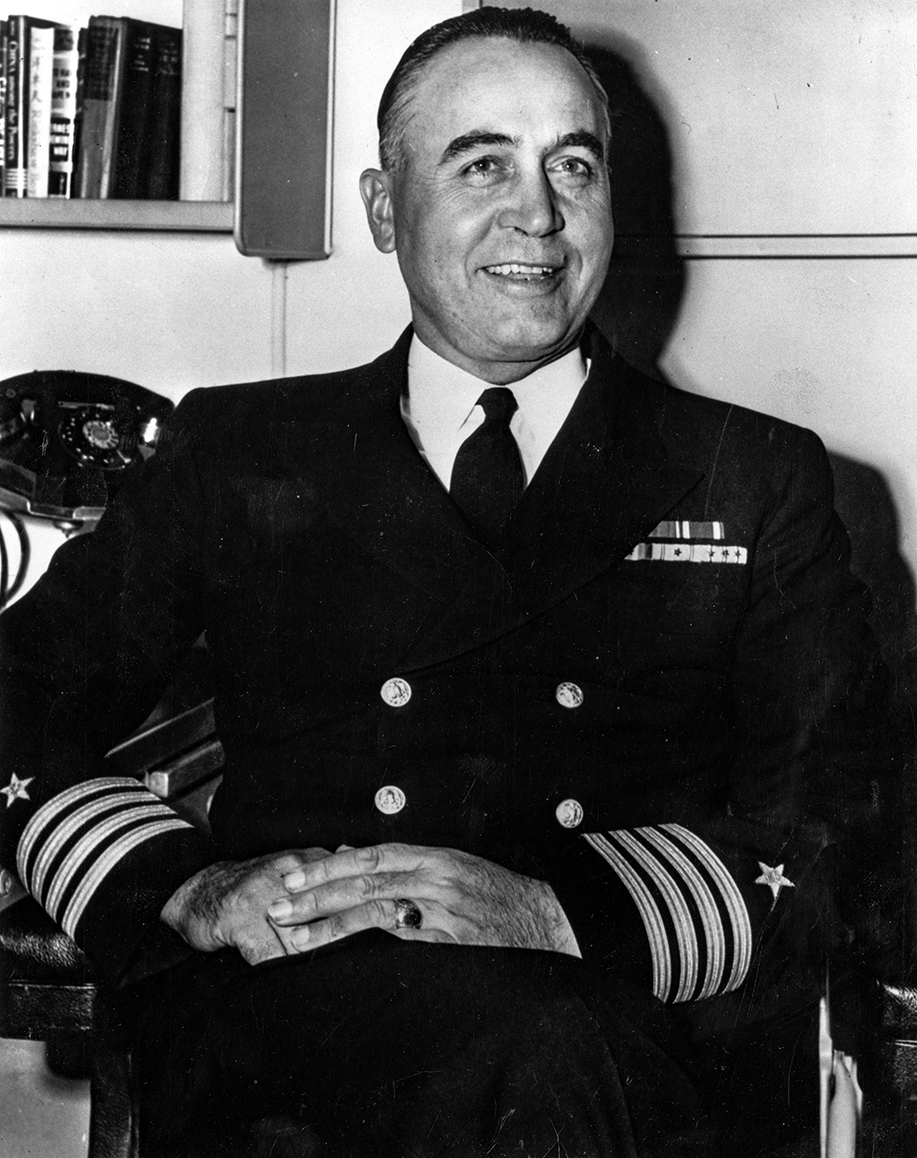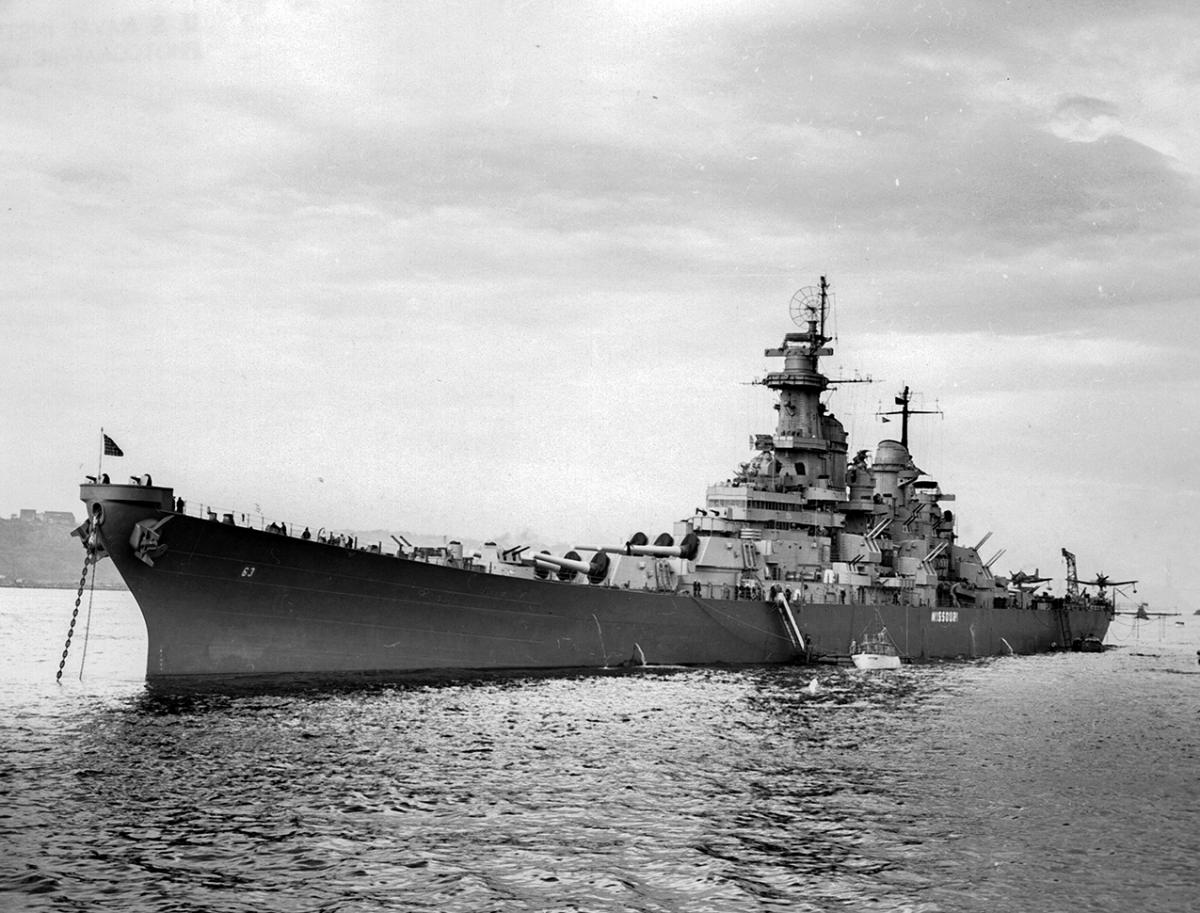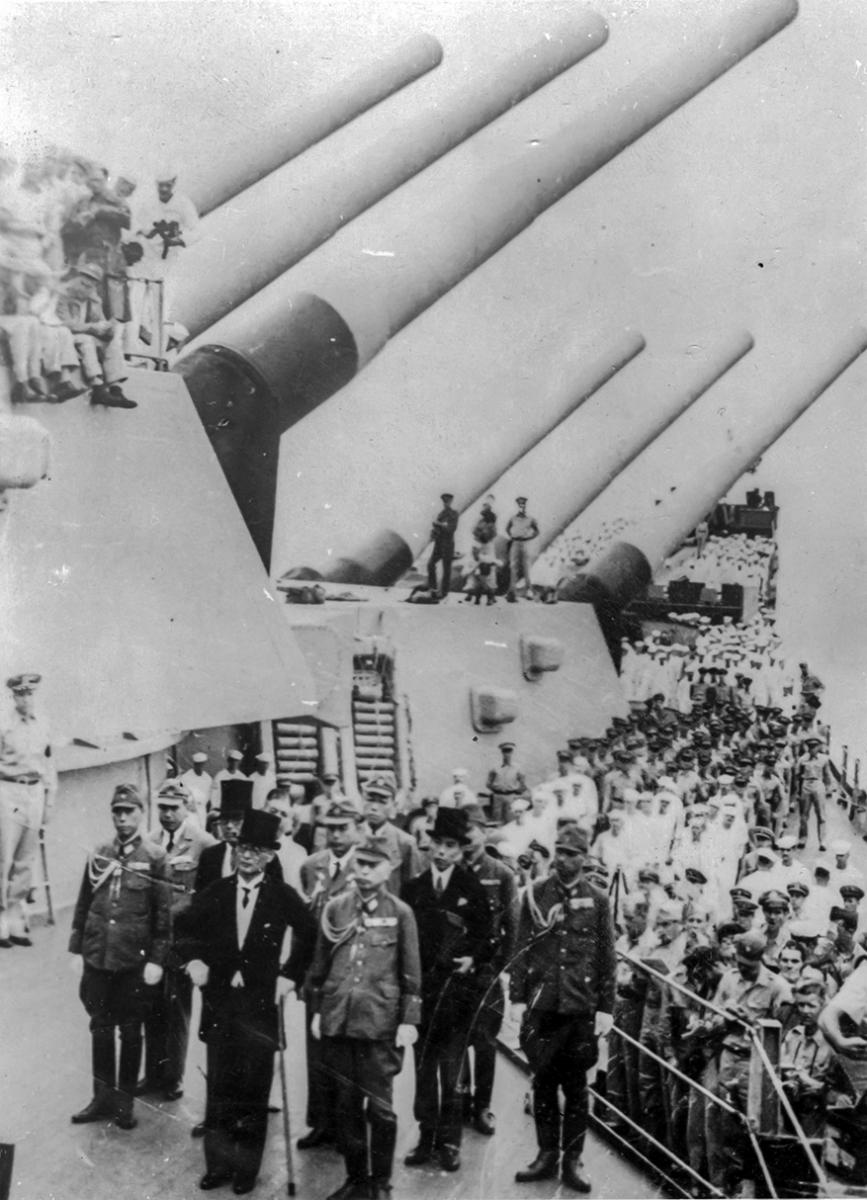
Murray, Stuart Shadrick, Adm., USN (Ret.)
(1898–1980)
An early submariner, Murray was involved in the construction of the submarine base at Pearl Harbor in the early 1920s. He commanded the submarines USS R-17 (SS-94), L-8 (SS-48), R-13 (SS-90), and S-9 (SS-114). In the 1920s he served in the battleships USS Arkansas (BB-33) and New York (BB-34) and was an instructor at the Naval Academy. In the 1930s he commanded the submarine USS S-44 (SS-155), served at the Portsmouth Navy Yard, commanded the submarine USS Porpoise (SS-172), was damage control officer in the heavy cruiser USS Portland (CA-33), and was a submarine detailer in the Bureau of Navigation.
When the Japanese attacked in 1941, Murray was commander of Submarine Division 15 at Manila, participating in the defense of the Philippines and Netherlands East Indies. His next assignment was chief of staff and aide to Commander Submarine Force, Southwest Pacific. In 1943 he became chief of staff to Charles Lockwood, Commander Submarine Force Pacific Fleet. In 1944-45 Murray was Commandant of Midshipmen at the Naval Academy. In the spring of 1945 he took command of the battleship USS Missouri (BB-63), flagship of Admiral William F. "Bull" Halsey Jr., Commander Third Fleet.
In Murray's oral history, after relating the ship's wartime activities, including bombardments against Honshu, Hokkaido, and Okinawa, he then provides a marvelously detailed description of the events leading up to and during the Japanese surrender ceremony on board the Missouri on 2 September 1945. In November 1945, as a newly selected rear admiral, he was ordered to Commander Seventh Fleet for duty with the survey for forming the U.S. Advisory Group to China. Subsequent flag billets included the following: 1948-49, Pearl Harbor Naval Base; in 1949-50, Commander Amphibious Training Command Atlantic Fleet; 1950-52, Commander Submarine Force Atlantic Fleet; 1952-54, Commandant of the 14th Naval District in Hawaii; and 1954-56 as Naval Inspector General. He retired from active duty in 1956 and later worked as a consultant for the Rand Corporation.
Interview Part I
In this clip from his fifth interview, conducted in October 1970 at his home in Santa Barbara, CA, Admiral Murray discusses the surprising handling capabilities of the USS Missouri (BB-63).
Admiral Murray: Destroyers just couldn't believe that the Missouri particularly and these other new battleships of that class had such a small turning circle. If you swung the rudder hard over at 20 to 30 knots, you could turn the pivot point of the ship in a 500-yardcircle. Of course, the bow and the stern — being 150 yards apart from that point — covered a much larger circle, and they also moved an awful lot faster than the pivot point did. What the destroyers couldn't understand was why we could turn inside them. Other than the latest new ones or the very small ones — old ones — but the ones that were built mostly during the war, they were just out of the way.
With our position there were two plane guards very often, sometimes only one. Their positions were supposed to be, if there were two, approximately 30 degrees on each side of our bow, port and starboard, and they were supposed to be 1,000 yards ahead of us. Often they were not. They'd drop back, so they were probably not more than 100 yards ahead of us, but off 500 or 600 yards on the bow. So, as a consequence, when a turn signal came up, to make a 60- or a 90- or a 120-degree turn for the whole task force, I immediately had to go on the TBS to tell them to, "Get out of there, and don't turn until we've turned inside of you." Well, they wouldn't believe it, and a couple of times we had to back full, reverse the rudder, and everything else to keep from cutting them in two.
Interview Part II
In this selection from Admiral Murray's sixth interview with Commander Kitchen at his home in Santa Barbara in February 1971, he relates some of the detailed preparation work undertaken for the Japanese Surrender.
Admiral Murray: The other point that we had to do was to drill for the Japanese delegation coming aboard. Our instructions had been that the Japanese delegation, which would be headed by Premier Shigemitsu, would consist of 11 Japanese.[****] Shigemitsu was premier and representing the Emperor and the government of Japan. General Umezo, who was Chief of the Imperial General Staff, would sign as representative of all the armed forces of the Japanese Empire.[††††] Then there would be three representatives of the civilian government of Japan, three from the Army, and three from the Imperial Navy. So it would be a total of 11 Japanese.
We got that information. We also found out from what we had already known that Premier Shigemitsu had a wooden leg. His leg had been blown off in Shanghai several years before. That presented a problem. First, the Japanese delegation was going to be delivered to the vicinity of the Missouri by a destroyer the next morning. The destroyer would be off the Missouri's bow, very close aboard, by about 8:00 o'clock in the morning, so that there'd be no question of the Japanese getting there. Then they would be sent over by a small boat to the Missouri at the proper time.
General MacArthur had said that he didn't want the Japanese aboard the Missouri on its weather deck more than five seconds, and he didn't want them to be even a fraction of a second late in getting up there. Nine o'clock was the official time. Well, it's kind of hard to try to run something within five seconds. Walking up a gangway, then across a deck, and then up another deck, and about 20 feet more to get into position, so the only way we figured we could do it was two parties. So we took young sailors and took a swab handle and put it down their trouser legs so they couldn't bend their legs, strap it on them. They'd get in a small boat just exactly like the one that the delegation would come over in, and they would be Shigemitsu, who was rapidly named "Peg-Leg Pete" by all the sailors and officers.
Well, we practiced this about 20 times — how long it took them to get out of this boat from sitting in it, get up onto the bottom platform of the forward gangway, come up the gangway.
[****] Mamoru Shigemitsu was Japan’s Foreign Minister.
[††††] General Yoshijiro Umezo, Japanese Army.
About this Volume
Based on eight interviews conducted by Commander Etta-Belle Kitchen, USN (Ret.), from May 1970 through May 1971, the volume contains 450 pages of interview transcript plus an index. The transcript is copyright 2001 by the U.S. Naval Institute; the interviewee placed no restrictions on its use. This is a revised version of the original, which was issued in 1974. The new version has been retyped, annotated with footnotes, and given a detailed index.





